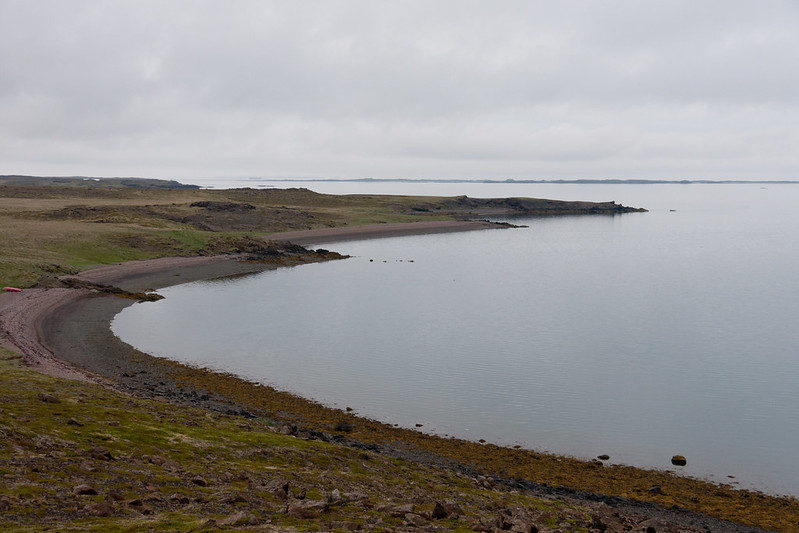Bougainville, a region rich in natural resources and located in Papua New Guinea’s (PNG) easternmost province, has a long and complex political history marked by its people’s struggle for independence. The island’s journey towards autonomy has been shaped by decades of colonial control, ethnic tensions, environmental challenges, and armed conflict. Today, Bougainville stands at a critical juncture as it seeks full independence from Papua New Guinea, following a referendum in 2019 in which an overwhelming majority voted in favor of independence.
This article explores the key moments in Bougainville’s political history, from colonial rule to the Bougainville Civil War and the current state of its quest for independence.
1. Colonial Roots and Early Struggles
The political history of Bougainville can be traced back to its colonial past. The island was first colonized by Germany in the late 19th century, becoming part of German New Guinea. However, following World War I, Bougainville was placed under Australian administration as part of a mandate from the League of Nations. Bougainville’s distinctive identity, including its ethnic and cultural differences from the rest of Papua New Guinea, began to emerge during this period.
One of the defining characteristics of Bougainville’s struggle has been the perception of itself as culturally distinct from PNG. The people of Bougainville are ethnically closer to the Solomon Islanders, with darker skin and distinct customs, which has historically led to feelings of marginalization within Papua New Guinea. These tensions would later feed into the island’s push for political autonomy.
2. The Panguna Mine and Environmental Tensions
One of the most significant developments in Bougainville’s political history was the establishment of the Panguna copper mine in the 1960s by Bougainville Copper Ltd, a subsidiary of the global mining giant Rio Tinto. At the time, the Panguna mine was one of the world’s largest open-cut copper mines and became a major source of revenue for the Papua New Guinea government.
However, the mine also brought enormous environmental and social costs to Bougainville. Local landowners received little compensation, and the environmental damage caused by the mine’s operations led to widespread discontent. Rivers were polluted, land was destroyed, and traditional ways of life were disrupted. Tensions between the local population and the PNG government escalated, as Bougainvilleans felt they were not benefiting from the wealth generated by the mine despite suffering the environmental consequences.
This discontent laid the groundwork for future conflict and contributed to Bougainville’s demand for greater control over its resources and political future.
3. The Bougainville Civil War (1988–1998)
The exploitation of the Panguna mine became the catalyst for the Bougainville Civil War, one of the most devastating conflicts in the Pacific region. In 1988, tensions erupted when the Bougainville Revolutionary Army (BRA), led by Francis Ona, began sabotaging the mine and demanding its closure. The BRA called for the redistribution of profits from the mine and greater autonomy for Bougainville.
The conflict escalated quickly, and the PNG government responded by sending in military forces. What started as a dispute over the mine soon grew into a full-scale war, as Bougainville declared its secession from PNG. The fighting, which lasted for nearly a decade, caused widespread devastation, leading to the deaths of an estimated 15,000–20,000 people and displacing thousands more. The PNG government imposed a blockade on the island, cutting off food, medicine, and essential supplies.
The war was marked by atrocities on both sides, with the PNG military and various factions of the BRA committing human rights abuses. For much of the conflict, Bougainville was isolated from the outside world, and the humanitarian crisis on the island received limited international attention.
4. The Peace Process and the Bougainville Peace Agreement (2001)
The war officially came to an end in 1998, but it took several more years of negotiations to reach a lasting peace. The Bougainville Peace Agreement (BPA) was signed in 2001, brokered by the United Nations and regional actors, including Australia and New Zealand. The agreement granted Bougainville autonomous status within PNG and laid out a roadmap for a future referendum on independence.
Key provisions of the agreement included:
- The establishment of the Autonomous Bougainville Government (ABG).
- A commitment to holding a referendum on independence no later than 2020.
- Demilitarization and disarmament, with the United Nations playing a key role in overseeing the process.
The peace agreement brought an end to the violence, and Bougainville began the slow process of rebuilding its society and economy. However, challenges remained, particularly regarding the future of the Panguna mine, which had been closed since 1989. The question of whether to reopen the mine, given its economic potential and the environmental damage it caused, remains a deeply divisive issue on the island.
5. The 2019 Referendum: A Vote for Independence
The most significant recent development in Bougainville’s political history was the 2019 independence referendum, which was a key provision of the Bougainville Peace Agreement. In the lead-up to the vote, there was significant debate over the island’s future, with many Bougainvilleans expressing a desire for full independence from Papua New Guinea.
The referendum, held in November and December 2019, resulted in an overwhelming victory for the pro-independence camp, with 97.7% of voters choosing independence over greater autonomy within PNG. The result was a clear signal that the people of Bougainville wanted to forge their own path as an independent nation.
However, the referendum was non-binding, and the final decision on Bougainville’s independence rests with the PNG government. Negotiations between Bougainville’s leaders and the PNG government are ongoing, with discussions centered on how and when independence might be granted.
6. Current Challenges and the Path Forward
While the referendum was a significant milestone, the road to full independence for Bougainville remains uncertain. Negotiations with the PNG government have been complex, with concerns over the economic viability of an independent Bougainville and the broader implications for other regions of PNG that might also seek autonomy.
Bougainville faces several key challenges as it navigates its future:
- Economic sustainability: The island’s economy remains underdeveloped, and there are questions about how Bougainville would support itself financially as an independent state. The Panguna mine, which has the potential to generate significant revenue, remains closed due to unresolved disputes among landowners.
- Political stability: Bougainville’s internal political landscape is fragmented, with different factions holding varying views on independence and economic development. Maintaining unity and ensuring a stable government will be crucial for the island’s future.
- International recognition: Bougainville would need to secure international recognition and support, particularly from neighboring countries and major powers, to establish itself as a sovereign state.
Conclusion: A Long Struggle for Self-Determination
Bougainville’s political history is a testament to the resilience of its people in their pursuit of self-determination. From the environmental struggles surrounding the Panguna mine to the devastation of civil war and the peace process that followed, Bougainville’s journey has been marked by both hardship and hope. The 2019 referendum demonstrated the island’s overwhelming desire for independence, but the path forward remains fraught with challenges.
As negotiations with the PNG government continue, Bougainville stands on the brink of becoming the world’s newest independent nation. Whether or not it achieves full independence, Bougainville’s struggle for political and economic autonomy will remain a powerful example of the pursuit of freedom in the face of adversity.



